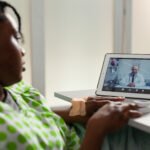The Dynamics of In Vitro Fertilization and Embracing Autonomy
Roma Bhavsar
March 2024
What is in vitro fertilization (IVF)?
Over the past five decades, IVF has emerged as a transformative treatment option for women, representing a substantial technological advancement in assisting families grappling with infertility and yearning for children. This intricate process entails a multi-step journey, requiring dedication and meticulous planning.
IVF involves several steps, with specific timing playing a crucial role throughout the process. Reproductive specialists explain that each IVF cycle begins with a patient self-injecting hormones daily for about 10 to 12 days to stimulate egg production within the ovaries. Regular monitoring follows until the eggs reach maturity, after which a different hormone triggers their retrieval under anesthesia – the second step.[1]
Subsequently, retrieved eggs are placed in a dish with sperm for fertilization, marking the third step in the process. The fourth step is the creation of a fertilized egg which is then cultured in a lab for approximately three to seven days until it reaches the blastocyst stage. This stage signifies a well-developed embryo containing cells for both the placenta and fetus.[1]

The last step in the IVF process involves either transferring the embryo into the woman’s uterus or freezing it for future use. Often, a combination occurs with one embryo transferred while any surplus embryos are frozen. The entire IVF cycle, from hormone administration to embryo implantation, typically spans about 2.5 weeks. However, frozen embryos may be transferred into the uterus in a separate cycle.[1]
Demand for IVF has surged globally, with IVF conceptions accounting for approximately 2% of all babies born in the United States. This percentage is projected to rise to 10% in the future as scientific advancements and reliance on IVF persist.[2]
Reproductive rights continue to divide the nation
As of March 2024, IVF remains at the forefront of discussions, marking it as one of the most talked about topics of the year. Following the reversal of Roe v. Wade, the discussion surrounding IVF also opens another dimension, inviting further scrutiny to women’s reproductive rights. This ongoing dialogue promises to reignite discussions and inquiries into the broader landscape of reproductive health and autonomy.
In a recent unprecedented ruling, the Alabama Supreme Court categorized embryos as children, sparking legal ambiguity regarding fertility treatments. This caused some IVF providers to suspend services for fear of wrongful death lawsuits when handling their routine disposal of nonviable and surplus embryos. Along with the potential liability for inadvertent destruction, it has ignited new debates within the realm of reproductive medicine in the United States.[3, 4]
This decision prompted public outrage and resulted in lawmakers taking political action by swiftly passing legislation to offer legal immunity to IVF providers. Following the enactment of the law, two of the three major clinics in Alabama resumed IVF services. However, legal experts say the future of those protections are on shaky ground.[4]
Medical professionals and advocacy organizations in the reproductive field have expressed apprehension over the ruling’s potential adverse effects on fertility treatments not only within Alabama but also across the nation as the discussions continue to evolve on the future of IVF.[3]
The future of IVF hangs in the balance
The Alabama Supreme Court ruling increased apprehension among IVF providers in Alabama and triggered political turbulence on a national scale, prompting Republicans to distance themselves from the decision amidst a pivotal election year where reproductive rights are one of the top issues.
As the debate rages on surrounding women’s autonomy and the complexity of reproductive decisions, a critical question remains: Will women emerge victorious in the struggle for control over their bodies, including the disposition of their eggs and embryos? It is essential that women are entrusted with this choice as it directly concerns their bodies. Women should be free from the constraints of legislation, honoring individuals’ rights to make deeply personal decisions regarding their lives and futures. Since the inception of IVF in 1978, the fundamental goal of infertility treatment remains the same – helping to build happy, healthy, and flourishing families.[2, 5]
References
[1] Godoy, M. (2024, February 23). The science of IVF: What to know about Alabama’s “extrauterine children” ruling. NPR. https://www.npr.org/sections/health shots/2024/02/23/1233023637/ivf-alabama-frozen-embryo-personhood-abortion-supreme court.
[2] Kushnir, V. A., Smith, G. D., & Adashi, E. Y. (2022). The Future of IVF: The New Normal in Human Reproduction. Reproductive Sciences, 29(3). https://doi.org/10.1007/s43032-021- 00829-3.
[3] Epstein, K. (2024, February 22). Major Alabama hospital pauses IVF after court rules frozen embryos are children. www.bbc.com. https://www.bbc.com/news/world-us-canada 68366337.
[4] Baker, L. (2024, March 6). Alabama lawmakers pass IVF immunity legislation. NPR. https://www.npr.org/2024/03/06/1235907160/alabama-lawmakers-pass-ivf-immunity legislation.
[5] Eskew, A. M., & Jungheim, E. S. (2017). A History of Developments to Improve in vitro Fertilization. Missouri Medicine, 114(3), 156–159.





